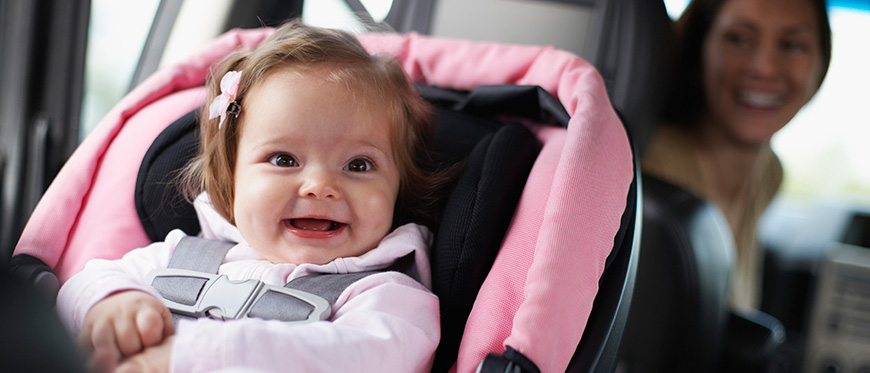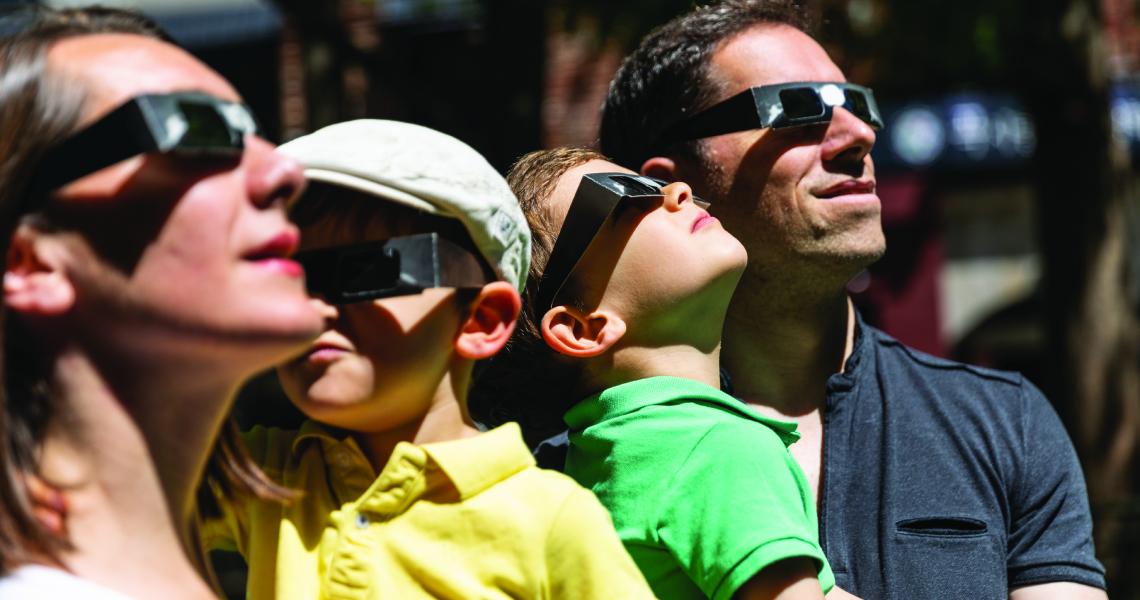This blog was reprinted by permission from the University of Vermont Medical Center HealthSource blog.
The third week of September is Child Passenger Safety (CPS) Week.
Car crashes are a leading cause of death and injury for children. These deaths and injuries can be prevented by use of car seats, boosters, and seat belts.
Parents and caregivers are sometimes confused. Questions range from “what seat should I buy before I have my baby?” to “when is my child ready to out of the booster seat?”
I am happy to share information to help you choose and use these important safety devices correctly!
The Right Seat
The right seat is one that is appropriate for your child’s age, weight, height, and development. It should also meet your family’s needs in terms of comfort and convenience. That way, you will use it correctly on every single ride.
- Labels on the seat will tell you if the seat is right for your child’s age, weight, and height.
- There is also a label that tells you when the seat is too old to be safe to use and what the model number and date of manufacture is. This information is important if you are checking on, or learn of, a possible recall for a car seat. Better yet, register your car seat with the manufacturer. You can do so on their website or by mailing in the registration card that comes with the seat. It already includes your car seat’s information and no postage is required.
- Only get a used car seat from a friend or relative, not from a thrift store or yard sale. You need to know if the seat has ever been involved in a crash. If a car seat has been in a moderate or severe crash, it should not be used.
- Keep your child in a rear-facing car seat until they are at least 2 years old or, preferably, until they have reached the height or weight limit allowed by the car seat manufacturer. Rear-facing is five times safer than forward facing as your child’s whole body is protected—the head, neck, and torso is cradled by the back of the safety seat in a frontal crash. Facing rearward also protects better in other types of crashes, particularly side impacts.
- Children should stay in a seat with a harness until they are at least four years old and at least 40 pounds or, preferably, until they reach their seat’s weight or height limit. A harness provides more protection for a child than a booster seat with a lap and shoulder seat belt.
- For children who have outgrown their harnessed car seat, use a belt positioning booster seat with the vehicle lap and shoulder belt until they are at least 8 years old and ensure that the seat belt fits them properly.
The Right Installation
Make sure the car seat does not move more than one inch from side to side or front to back along the belt path (where the seat belt or lower anchor strap goes through the car seat).
- If using the lower anchors (horizontal bars in the vehicle seat that provide a secure anchor for the car seat’s lower attachments), pull the lower anchor belt(s) tight while putting some weight on the seat. You should not need to kneel or sit on the seat. Each vehicle has its own weight limit for the lower anchors. If you don’t know the limits and your child’s weight reaches 40 pounds, always use the seat belt, not lower anchors, to install your car seat.
- When using the seat belt to install a car seat, make sure you lock the belt. This is usually done by pulling the belt out all the way to switch the belt to a locked mode. Other times, the latch plate or buckle has a built-in locking mechanism. Or, the car seat itself may have a built in “lock-off” mechanism.
- You can sometimes use the lower anchors and a seat belt together, but usually not. Read the car seat and the vehicle manual to learn more.
- For forward facing seats, there is also a tether which keeps the car seat from tipping forward on impact and can provide extra protection. The tether anchor point could be located on the ceiling or the floor of the vehicle, the rear of the seat itself, or on shelf behind the rear seat, such as in sedans. Read your vehicle manual to learn where tether anchors are located.
- Do not attach two car seats to one lower anchor or tether anchor.
- You may see or hear the term “LATCH” used (in the car seat manual, your vehicle manual, or other resources). LATCH stands for Lower Anchors and Tethers for Children.
A car seat fitting station is a free and convenient way to get help with your installation from a Child Passenger Safety Technician.
The Right Fit
The harness or seat belt needs to fit your child securely and properly in order to keep him or her in the car seat (or vehicle seat) in case of a crash.
- Harness straps should be at or below the child’s shoulders for rear-facing and at or above the child’s shoulders for forward-facing.
- The chest clip should be at your child’s armpit level. The chest clip’s job is to make sure the shoulder straps are where they’re supposed to be, prior to a crash.
- Harnesses should fit snugly. Pinch the harness strap up and down around the shoulders of your child. If you can pinch any of the harness strap material, the harness isn’t tight enough.
- Nothing should be behind or inside the harness system. Winter jackets, blankets, sleeping bags, bunting, or bulky clothing can add a lot of slack in the harness, which creates a dangerous situation. It increases the likelihood of trauma to the head, neck, and spine and ejection during a crash is possible.
- With a belt positioning booster seat, the vehicle lap belt should fit snugly across the child’s upper thighs while the shoulder belt is snug across the chest. The belt must fit correctly on the child’s shoulder. Backless boosters may be used if the vehicle’s seat has a high back or headrest for neck protection.
- Your child can move out of a booster seat when they are at least eight years old and you can answer yes to the following questions:
- Does the child sit all the way back against the vehicle’s seat?
- Is the lap belt below the stomach, touching the thighs?
- Is the shoulder belt centered on the shoulder and chest?
- Do the child’s knees bend comfortably at the edge of the vehicle’s seat?
- Can the child stay seated like this for the whole ride?
The Right Place
Children should ride in the back seat until they are 13 years old, even if they no longer need a car seat.
- Never put a rear facing infant seat in front of an active airbag. It can be extremely dangerous to infants or young children.
- The center or the back seat is the safest place in the car to install a car seat; however, few vehicles have lower anchors in the center position. Most vehicles and car seats do not allow you to use the two inner lower anchors from the side seating positions and it is sometimes difficult to install a car seat tightly in the middle if the vehicle seat is narrow or uneven. Refer to the car seat and the vehicle manual for information specific to your car seat and your vehicle.
- If you don’t have enough room in the back of your car to safely transport the number of children who ride with you, or you have questions about which child should ride in the middle seat, please visit a car seat fitting station so a Child Passenger Safety Technician can help evaluate your situation.
Right for Everyone
For adults and older children (who are big enough for seat belts to fit properly) seat belts dramatically reduce risk of death and serious injury. Make sure everyone in your family buckles up for every ride.
- Seat belts have saved 344,448 lives since 1975 in the United States alone. Air bags also help lessen injury in crashes, but only when used with seat belts.
- Seat belts and car seats keep drivers and passengers inside the car and protected from the road and other cars in a crash. If you are thrown out of the car, you may be thrown through the windshield, scraped along the pavement, or even crushed by your own vehicle or another one. Three out of four people who are ejected during a fatal crash die from their injuries.
- Some people worry about being trapped if the car is in the water or on fire. But these kinds of crashes don’t happen often and if they do happen, you have a better chance of getting out of the car alive if you are alert and not seriously injured.
If you have any questions, check the University of Vermont Medical Center’s Child Passenger Safety Webpage or any of these helpful websites:
- Be Seat Smart – includes a list of all Vermont car seat fitting stations, by county.
- Ultimate Car Seat Guide
- Car Seat Safety
- National Highway Traffic Safety Administration (seat belts)
Maureen Johnson, CSP, CPST-I, is a Child Passenger Safety Specialist at the University of Vermont Medical Center.





